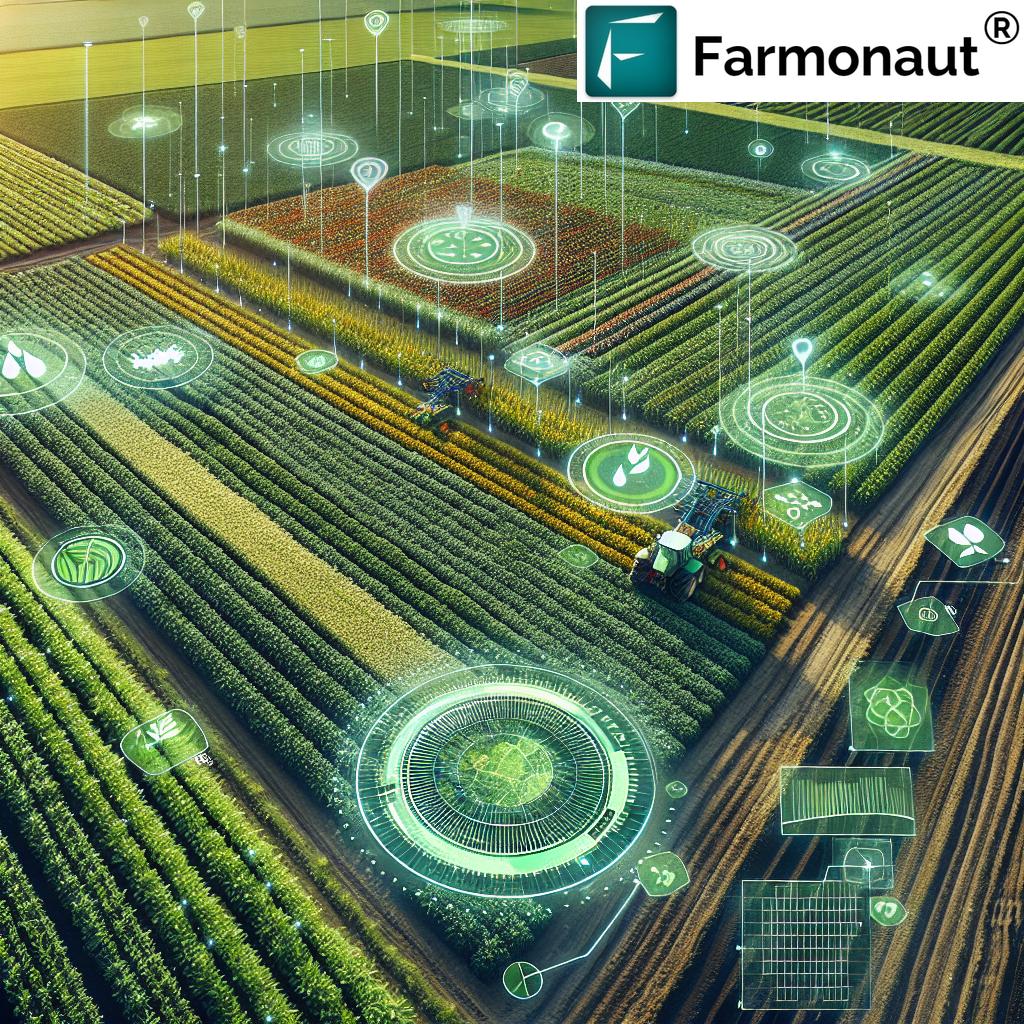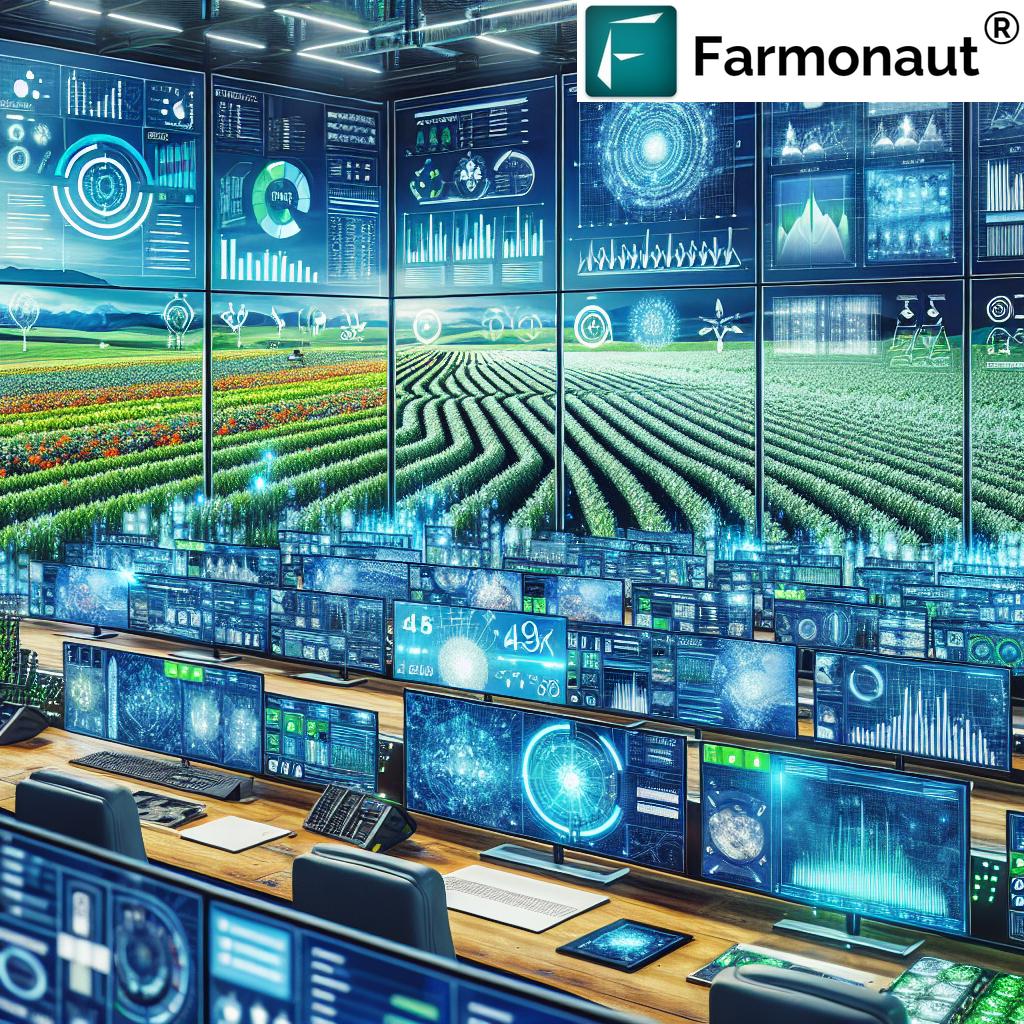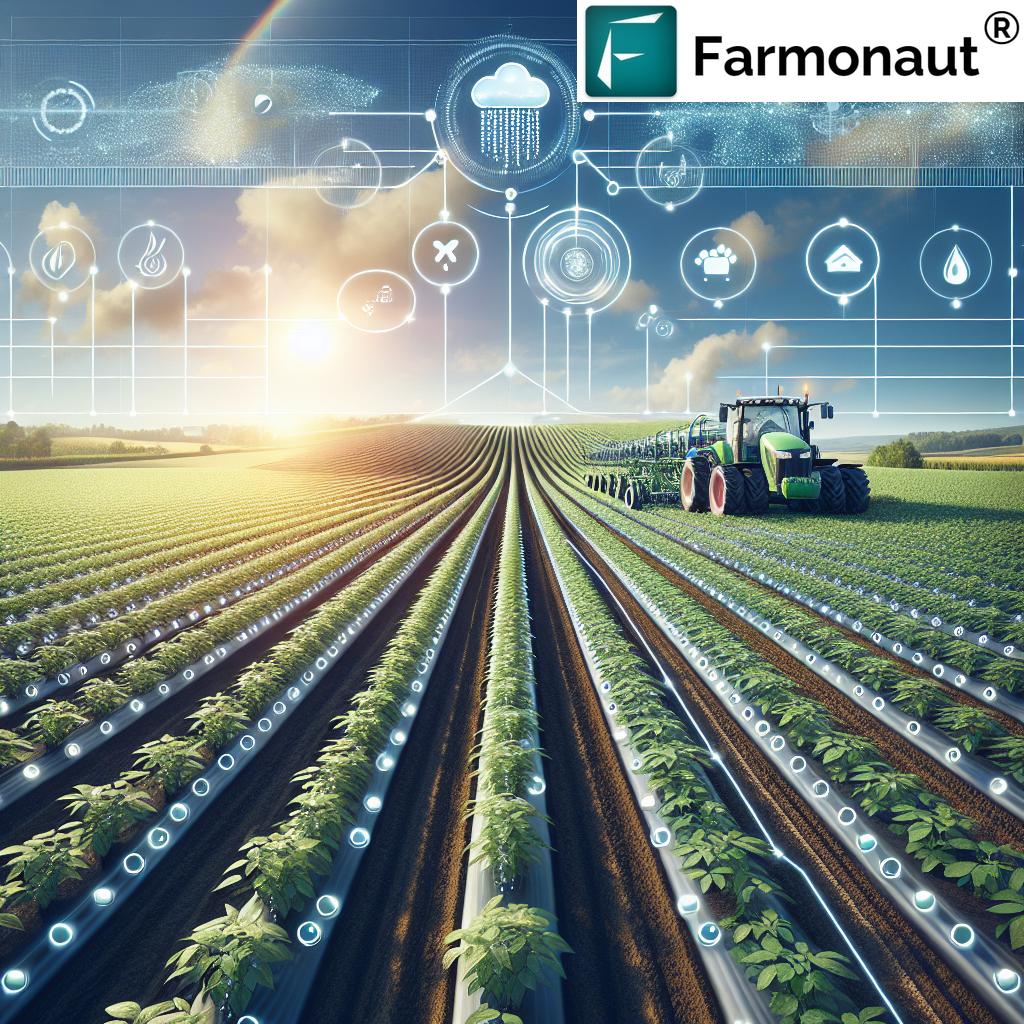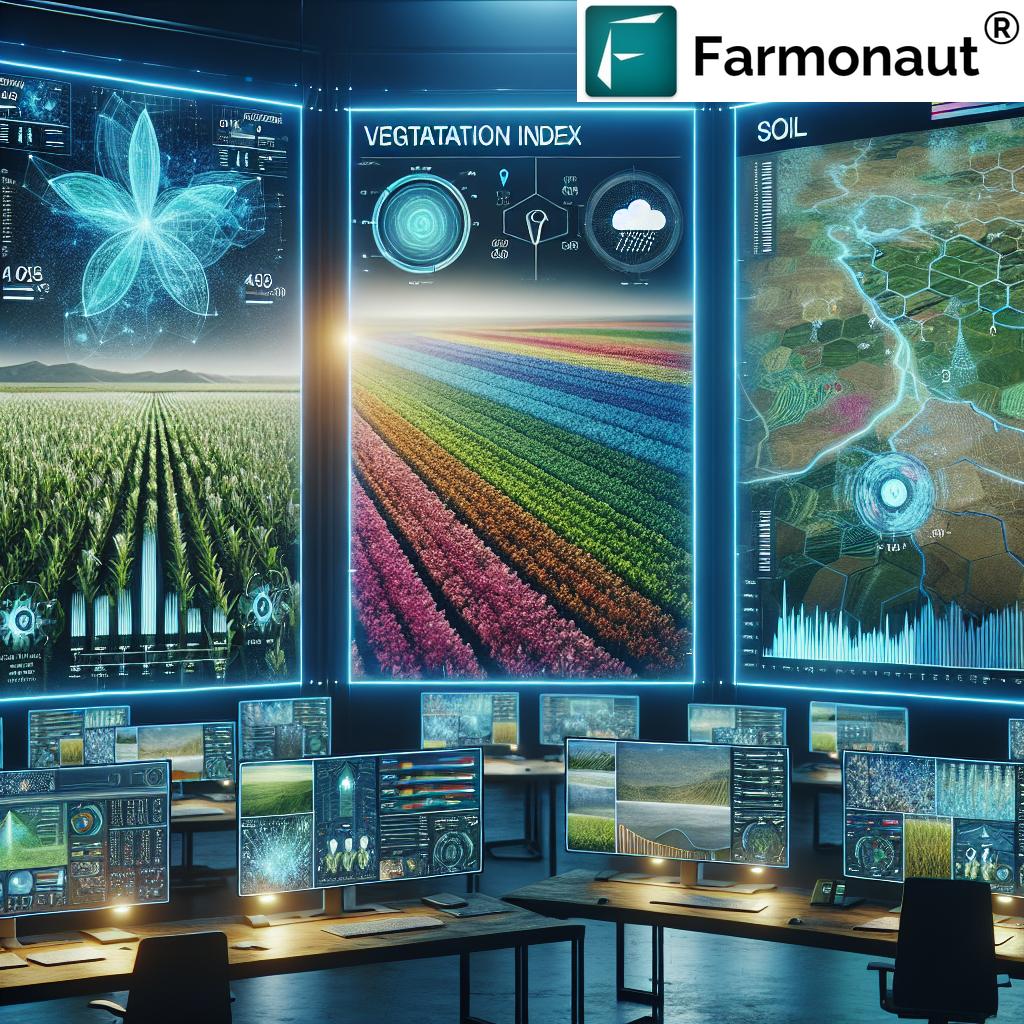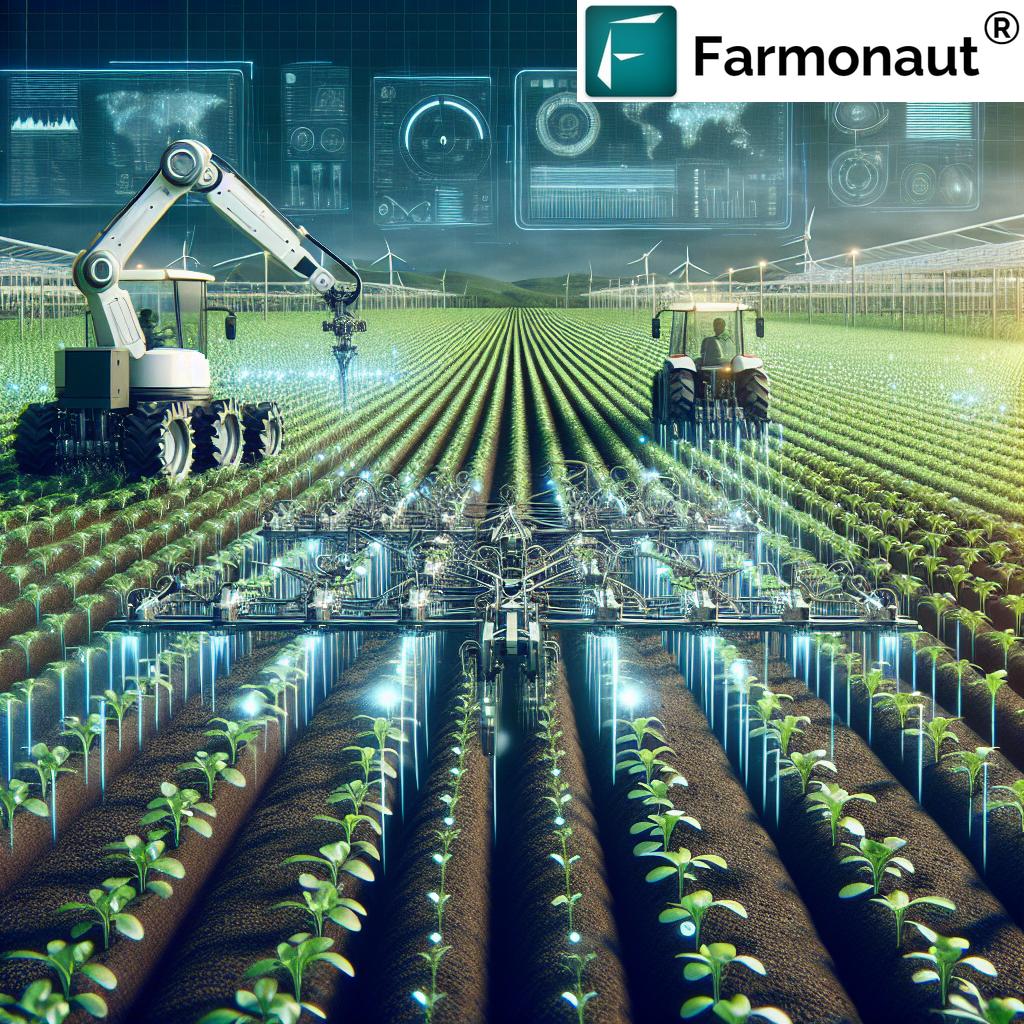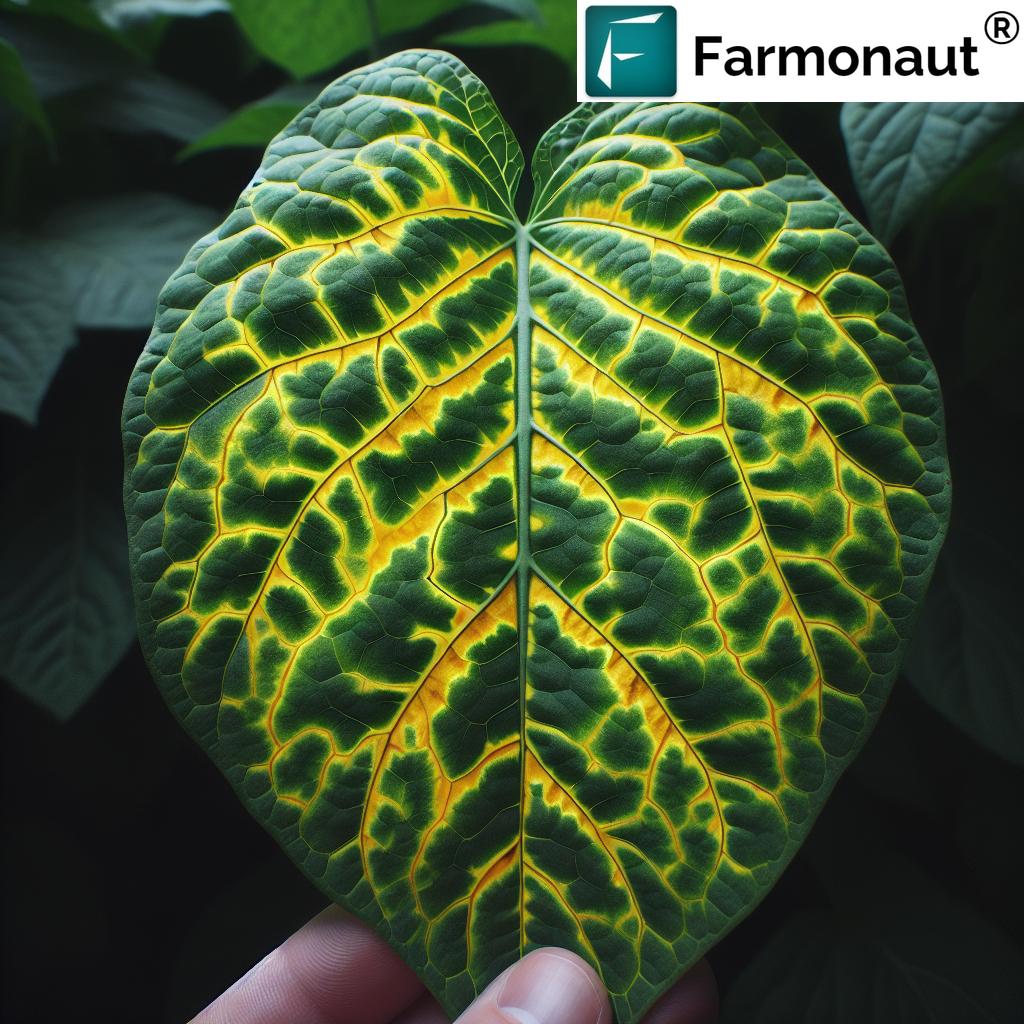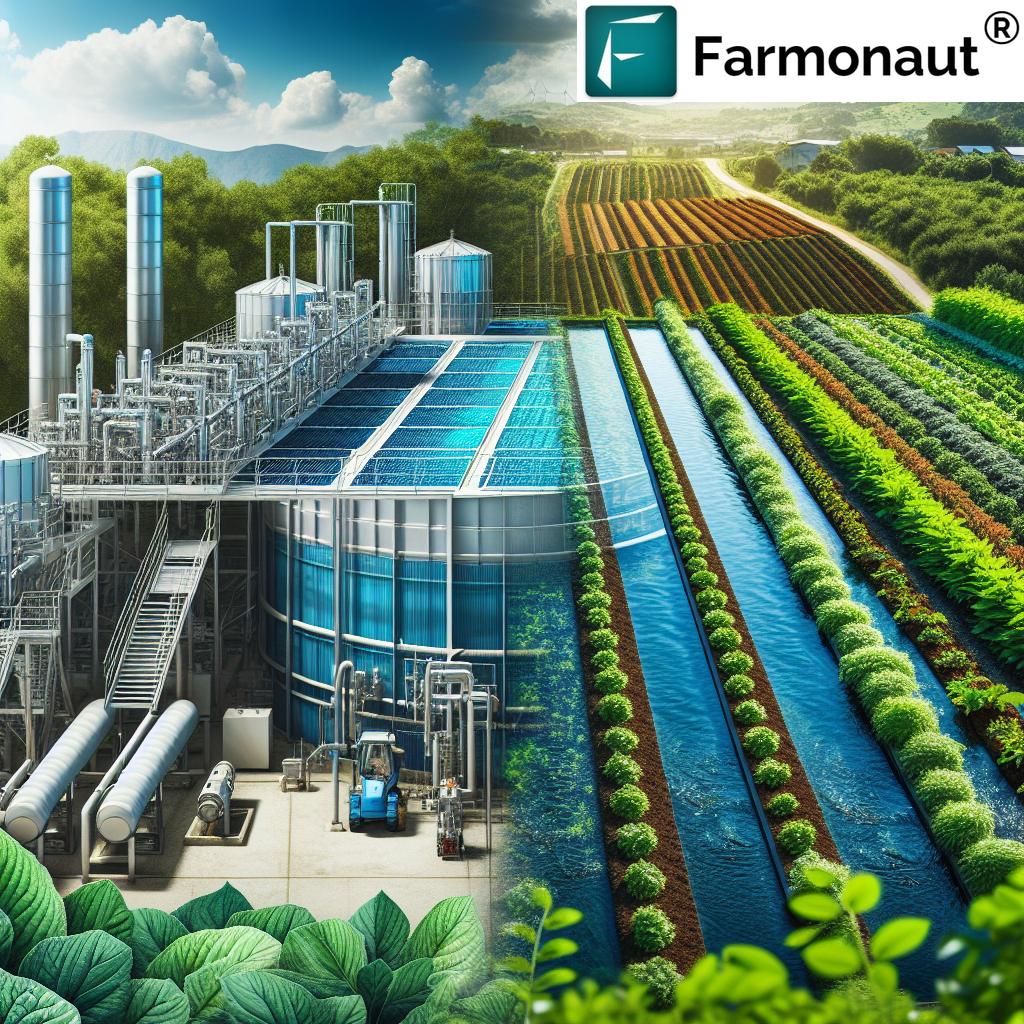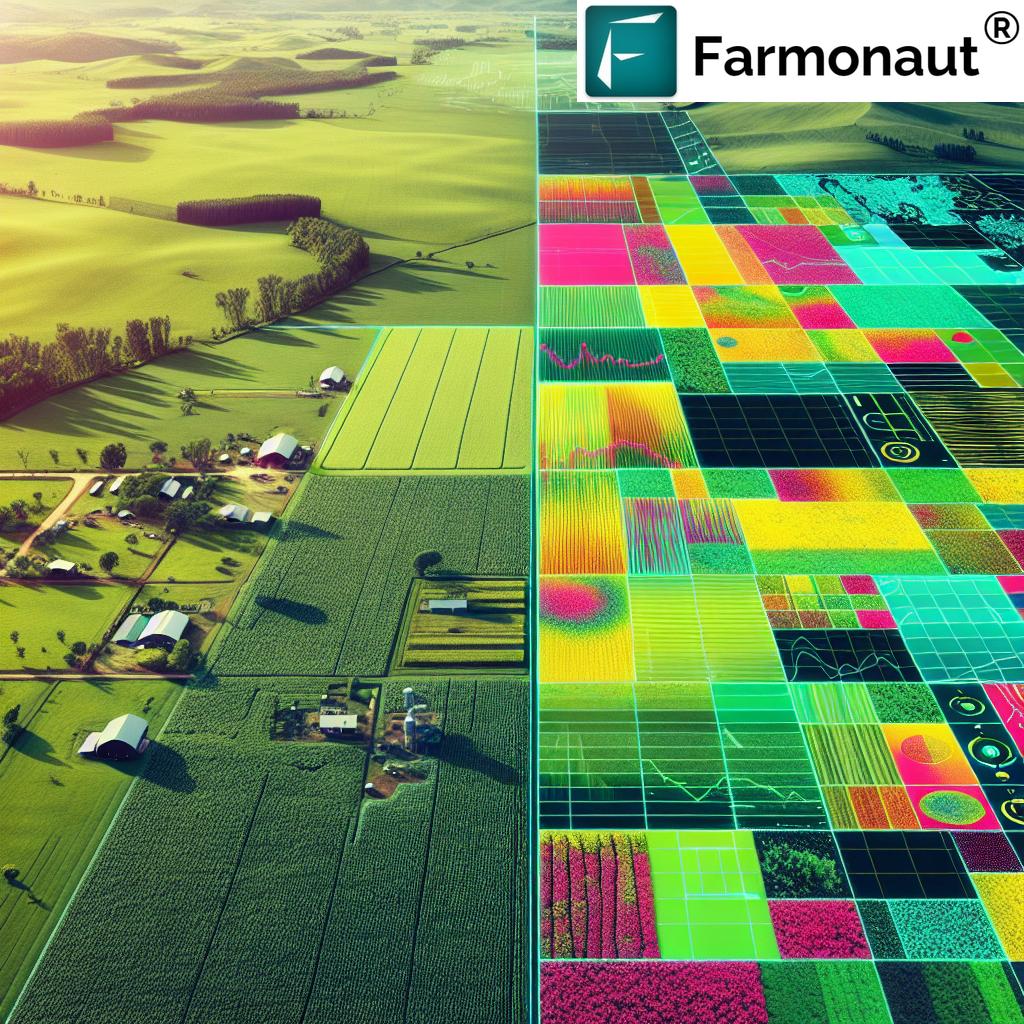Precision Ag: 7 Tech Secrets Boosting Yields Fast!
“Precision ag can increase crop yields by up to 20% using satellite imagery and data-driven decision-making.”
Table of Contents
- What is Precision Agriculture?
- The 7 Game-Changing Tech Secrets of Precision Agriculture
- Farmonaut: Making Precision Farming Affordable & Accessible
- Comparison Table of Precision Agriculture Technologies
- Key Benefits of Precision Agriculture
- Challenges & Considerations in Precision Farming
- Emerging Trends & the Future of Precision Ag
- FAQs on Precision Agriculture
- Conclusion: Cultivating a Resilient and Sustainable Future
What is Precision Agriculture?
In today’s global agricultural landscape, precision agriculture (also called “precision farming”) stands at the forefront of innovation. By integrating advanced technologies—including GPS, GIS, remote sensing, IoT, drones, artificial intelligence, and data analytics—farmers can monitor and optimize every stage of the crop growth cycle. This places actionable data directly in our hands and enables us to make informed decisions that maximize productivity, enhance sustainability, and reduce overall costs.
Unlike traditional broad-brush approaches, precision ag targets field variability down to the square meter, applying the right input at the right time and in the right amount. Innovations like Farmonaut empower both large farms and smallholders with real-time crop health monitoring, satellite analytics, and AI-driven advices—all accessible from smartphones, tablets, and web platforms. The result? Healthier crops, optimized resource use, and a significant leap forward for sustainable agriculture practices.
The 7 Game-Changers: Tech Secrets Driving Precision Agriculture
Let’s uncover the 7 most powerful technologies that are currently transforming modern farming worldwide. Each of these tools and systems is designed to monitor, analyze, and enhance crop productivity and strengthen sustainability through data-driven management.
1. GPS & GIS in Agriculture: Mapping the Field with Precision
- Global Positioning System (GPS) delivers accurate location data down to centimeters, guiding everything from tractor navigation to yield mapping. No more unnecessary fuel consumption—resource application and harvesting are streamlined and efficient.
- Geographic Information System (GIS) analyzes spatial data and generates detailed field maps (soil properties, moisture levels, crop health). This visualization exposes variations across the field and enables targeted interventions—for example, knowing exactly where extra fertilizer is needed improves both yield and input efficiency.
GPS and GIS in agriculture rank among the vital first steps to a fully digitized farm. With these two technologies combined, we—from smallholders to large-scale farms—can map fields accurately, navigate equipment efficiently, and reduce operational overlap.
2. Remote Sensing & Drones: Seeing the Invisible
- By capturing aerial imagery from satellites and drones, remote sensing in agriculture lets us detect pest infestations, assess nutrient deficiencies, and monitor crop stress across vast areas, all in real-time.
- Modern multispectral imaging sees far beyond the visible spectrum, picking up subtle changes in vegetation health (via NDVI and other metrics), soil moisture, and early signs of disease.
- Farmonaut’s solution leverages satellite imagery—delivered on Android, iOS, and web—allowing us to monitor our crop health and soil conditions from anywhere with the click of a button.
This is especially critical for timely and localized responses, minimizing risk and maximizing yield. Remote sensing is also a game-changer for satellite-backed crop loan and insurance verifications.
3. Variable Rate Technology (VRT) in Farming: Inputs Only Where Needed
- Variable Rate Technology in farming empowers us to apply seeds, fertilizers, and pesticides—each at variable rates across the field—customized to soil and crop need at every location.
- This targeted application of inputs directly reduces waste, minimizes environmental impact, and assures optimal growth conditions for every portion of the field, translating into cost savings and higher productivity.
Adopting VRT can result in up to 15–20% savings on input costs while boosting yield by 10–15%. The result is a win–win for both our wallets and the environment.
4. Internet of Things (IoT) and Smart Sensors in Farming
- IoT in farming connects a network of smart sensors—from soil moisture probes to weather stations and nutrient detectors—to continuously collect real-time (temperature and moisture levels, EC, NPK, etc.).
- This data is sent straight to our farm management system, triggering automated irrigation or nutrient delivery to specific parts of the field.
- With Farmonaut’s resource management capabilities and APIs (API access and developer docs), agribusinesses can seamlessly integrate their own IoT sensors and data feeds.
IoT-driven farms experience sharper operational efficiency, enhanced yield monitoring, and reduced manual intervention—a giant leap for sustainable agriculture practices.
5. Artificial Intelligence (AI) & Machine Learning: The Brain of the Smart Farm
- AI in crop management is revolutionizing farming by analyzing massive datasets to forecast weather, predict pest outbreaks, diagnose crop diseases, and optimize crop rotation strategies.
- Farmonaut’s Jeevn AI advisory system stands out, delivering personalized, real-time recommendations to every farmer, based on their specific crop, field conditions, historical data, and remote sensing insights.
- These actionable insights empower us to make truly informed decisions.
The integration of AI and machine learning translates into higher yields, lower losses, and greater adaptation to both market and environmental changes.
6. Advanced Farm Management Systems & Apps
- Today’s farm management software platforms—like Farmonaut—are the “control tower” of precision ag. We can access real-time crop health monitoring, fleet management, resource tracking, blockchain-based traceability, and carbon footprinting tools from a single dashboard.
- All our farm data is at our fingertips—plan, execute, track, and refine field operations for maximum efficiency and sustainability.
- Large-scale farm management solutions are invaluable for agribusinesses seeking operational excellence.
From mobile apps to web browsers, these systems eliminate guesswork and promote data-driven decision-making for farms of any size.
“Advanced farm management systems reduce fertilizer use by 15%, optimizing resources and boosting sustainability.”
7. Blockchain Traceability & Carbon Footprinting
- Blockchain technology introduces a new level of traceability across agricultural supply chains. Each transaction or step in the crop journey—from seed to supermarket—is transparently recorded, building trust and meeting regulatory demands.
- Farmonaut’s traceability tools (learn how blockchain transparency can benefit your farm) ensure every stakeholder, including consumers, can verify the origin and health of agricultural products.
- With carbon footprinting solutions (see how to track and reduce farm emissions), we can measure and reduce the environmental impact of our farms, stay compliant with global regulations, and enhance the sustainability reputation of our produce.
These innovations promote greater transparency and environmental stewardship across the world’s food supply.
Farmonaut: Making Precision Ag Accessible & Affordable for All
Farmonaut is leading the charge in precision agriculture technology adoption by providing satellite-based crop health monitoring, AI-based advisories, blockchain-based traceability, and resource management—all within a highly intuitive, cost-effective farm management platform.
- Real-time crop monitoring: Multispectral satellite imagery enables accurate tracking of vegetation indices (NDVI, EVI), soil moisture, and crop stress, giving us the tools needed for proactive management.
- Jeevn AI advisory system: Provides customized guidance on irrigation, pest risks, weather forecasts, and more—empowering each of us with farm-specific expertise.
- Blockchain traceability (traceability platform): Ensures transparent and secure tracking of farm produce, protecting against fraud and enhancing trust.
- Fleet & resource management (fleet management solution): Enables efficient management of agricultural vehicles and machinery, optimizing their usage and minimizing costs.
- Carbon footprinting tools (carbon tracking dashboard): Allows us to monitor, report, and reduce our farm’s environmental impact.
From subscription-based models for individual farmers to APIs for agro-corporates and financial verification tools for institutions, Farmonaut provides solutions for everyone aiming to harness the potential of technology in farming.
Comparison Table: Precision Agriculture Technologies at a Glance
| Technology | Main Function/Feature | Yield Improvement (%) | Implementation Speed | Estimated Cost (USD/acre) | Sustainability Impact |
|---|---|---|---|---|---|
| Satellite Imagery (e.g., Farmonaut) | Remote monitoring of crop and soil health, large-scale field analytics, NDVI, moisture tracking | 15–25% | Fast | $2–$10 | Reduced water, fertilizer & pesticide use |
| Drones | High-res aerial imagery, crop scouting, targeted spraying | 10–20% | Medium | $12–$30 | Minimized chemical drift |
| IoT Sensors | Real-time soil, moisture, and environment monitoring | 10–18% | Medium | $6–$15 | Precise water & resource use |
| Variable Rate Technology (VRT) | Site-specific seeding & fertilizer application | 10–15% | Medium | $5–$20 | Lower input waste |
| Farm Management Software | Data analytics, planning, recordkeeping, field task automation | 12–20% | Fast | $1–$10 | Supports overall sustainability |
| AI-Powered Prediction Tools | Forecast yields, pest risk, optimize irrigation & rotation | 15–22% | Medium–Fast | $3–$12 | Prevents losses & overuse |
| Mobile Field Apps | On-the-go decision-making, fast communication, advisories | 8–15% | Fast | $1–$5 | Reduces inefficiency |
Key Benefits: Why Embrace Precision Agriculture?
- Boosted Productivity – Maximizing crop yields by leveraging data-driven decisions, timely interventions, and input optimization. Research points to 20–30% increases in output soon after adoption of precision farming technologies.
- Cost Efficiency – Accurate, targeted application of seeds, fertilizers, and water. Less waste, lower expenses—especially significant for farms managing thin margins.
- Environmental Sustainability – Precision tools minimize the use of agrochemicals and conserve water through smart irrigation and nutrient management. This directly protects soil health and reduces runoff and pollution.
- Enhanced Farm Management – Centralized data management systems mean improved oversight, long-term planning, and a seamless digital record of every farm operation.
- Stronger Resource Allocation – No more guesswork; each input is applied when and where it is most needed.
- Traceability & Trust – Blockchain-based traceability secures transparency for buyers, regulators, and end-consumers (see Farmonaut’s traceability solution).
- Increased Access to Financing – Satellite verification accelerates crop loans and insurance (Farmonaut’s crop loan and insurance platform makes this process more reliable for both farmers and financial institutions).
Challenges & Considerations in Implementing Precision Ag
While the impact of precision farming technologies is substantial, we must consider a few real-world hurdles:
- High Upfront Costs: Advanced sensors, VRT hardware, drones, and AI-powered analytics require initial investment. However, Farmonaut circumvents expensive hardware by utilizing satellite data—making precision more affordable and scalable.
- Data Management & Privacy: The massive volumes of farm data (often personal and commercially sensitive) raise legitimate privacy, security, and ownership concerns. Transparent policies and secure platforms, like those offered by Farmonaut, are crucial.
- Lack of Standardization: Integrating multiple technologies is complicated by the lack of universal standards. This sometimes creates interoperability challenges in connecting devices, software, and systems.
- Digital Literacy & Change Management: Onboarding the next wave of digital-native farmers will be gradual. Training and education are necessary for widespread adoption.
- Connectivity Barriers: Reliable internet access is essential for real-time, app-based farm management. Regions with limited digital infrastructure may face delays in adoption.
Emerging Trends & The Future of Precision Ag
We’re witnessing a vibrant evolution in precision agriculture. The next few years will see exciting new trends and technologies shaping the industry:
- Deep Integration of AI, IoT, Blockchain: AI will diagnose plant disease, recommend optimal planting windows, and forecast yields with remarkable accuracy. IoT and blockchain will secure data, automate reporting, and enhance traceability for compliance and market access.
- Robotics & Autonomous Machinery: The future of farming will feature fleets of self-driving tractors, robotic planters, and harvesters performing their work with high precision and efficiency, reducing labor dependency.
- Open-Source Digital Initiatives: Solutions like FarmBot and Farmonaut’s accessible digital tools bring advanced tech to the broader farming community, leveling the playing field for small and medium-scale producers.
- Climate-Smart Analytics: Carbon footprint monitoring (track your carbon emissions and impact) and sustainable decision support will become standard features, especially for eco-conscious markets.
- APIs & Platform Ecosystems: B2B and developer access to farm data via API (Farmonaut API and API developer docs) ensures seamless integration of custom applications, weather dashboards, and third-party analytics on top of existing farm management systems.
- Mobile-First Tools: Accessibility continues to expand through mobile-first field apps (download Android & iOS apps), giving every farmer access to insights anytime, anywhere.
Frequently Asked Questions (FAQ) on Precision Agriculture
Q1: How does precision agriculture increase crop productivity and sustainability?
Precision agriculture integrates data from GPS, remote sensing, IoT sensors, and AI analytics to identify variability within fields. This enables targeted interventions (such as variable fertilizer application and smart irrigation), minimizing waste, reducing costs, and achieving higher yields—thereby maximizing crop productivity and enhancing sustainability by conserving resources and reducing environmental footprint.
Q2: What are the entry costs for precision farming technologies?
Costs vary by technology. Traditional precision ag required high investments in sensors and machinery, but platforms like Farmonaut leverage affordable satellite imagery, subscription plans, and scalable APIs to reduce upfront investment dramatically—making digital agriculture accessible to farms of all sizes.
Q3: How does Farmonaut help improve efficiency for small and large farms?
Farmonaut delivers real-time crop health reports, AI-based advisories, resource management, and traceability via mobile apps and web portals. This enhances efficiency through data-backed decisions, optimal resource allocation, and environmental monitoring—ensuring that both small and large farms can benefit from precision ag.
Q4: Are precision agriculture systems suitable for farmers with limited digital experience?
Yes. Many modern platforms, such as Farmonaut, are designed for ease of use, with intuitive dashboards and simple mobile apps. Additionally, detailed support articles, video guides, and community forums are available to help users at every technical skill level.
Q5: Can I use Farmonaut solutions if I work in agroforestry or plantations?
Absolutely. Farmonaut’s platform supports crop, plantation, and forest management advisory—allowing accurate monitoring and management of plantations, forests, and diverse crop systems.
Conclusion: Cultivating a Data-Driven, Sustainable Rural Future
At its core, precision agriculture is about using innovative tools and data analytics to optimize crop growth, reduce costs, and preserve our environment. With real-time field data informing actionable insights, tools like Farmonaut are democratizing advanced farm management systems for farmers of every size, anywhere on the globe.
As emerging technologies like AI, IoT, and blockchain become further integrated into the agricultural landscape, we look forward to an era of smarter, more resilient, and sustainable agri-systems. With accessible solutions and a commitment to environmental stewardship, it’s never been easier—and more rewarding—to adopt precision farming practices.
Ready to maximize your farm’s yield and sustainability? Explore the latest digital tools, download Farmonaut, or integrate Farmonaut’s APIs for a data-driven leap forward!


